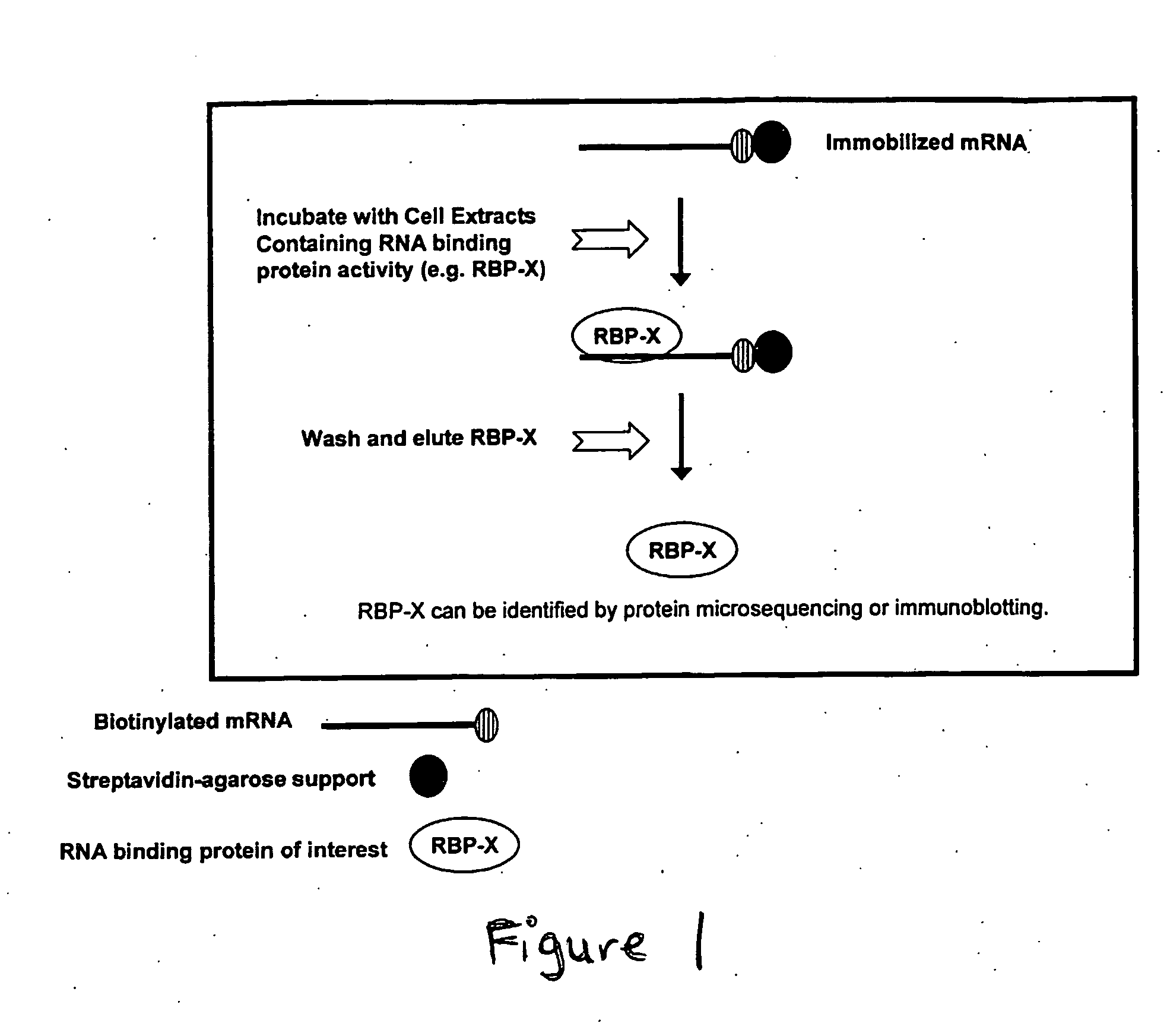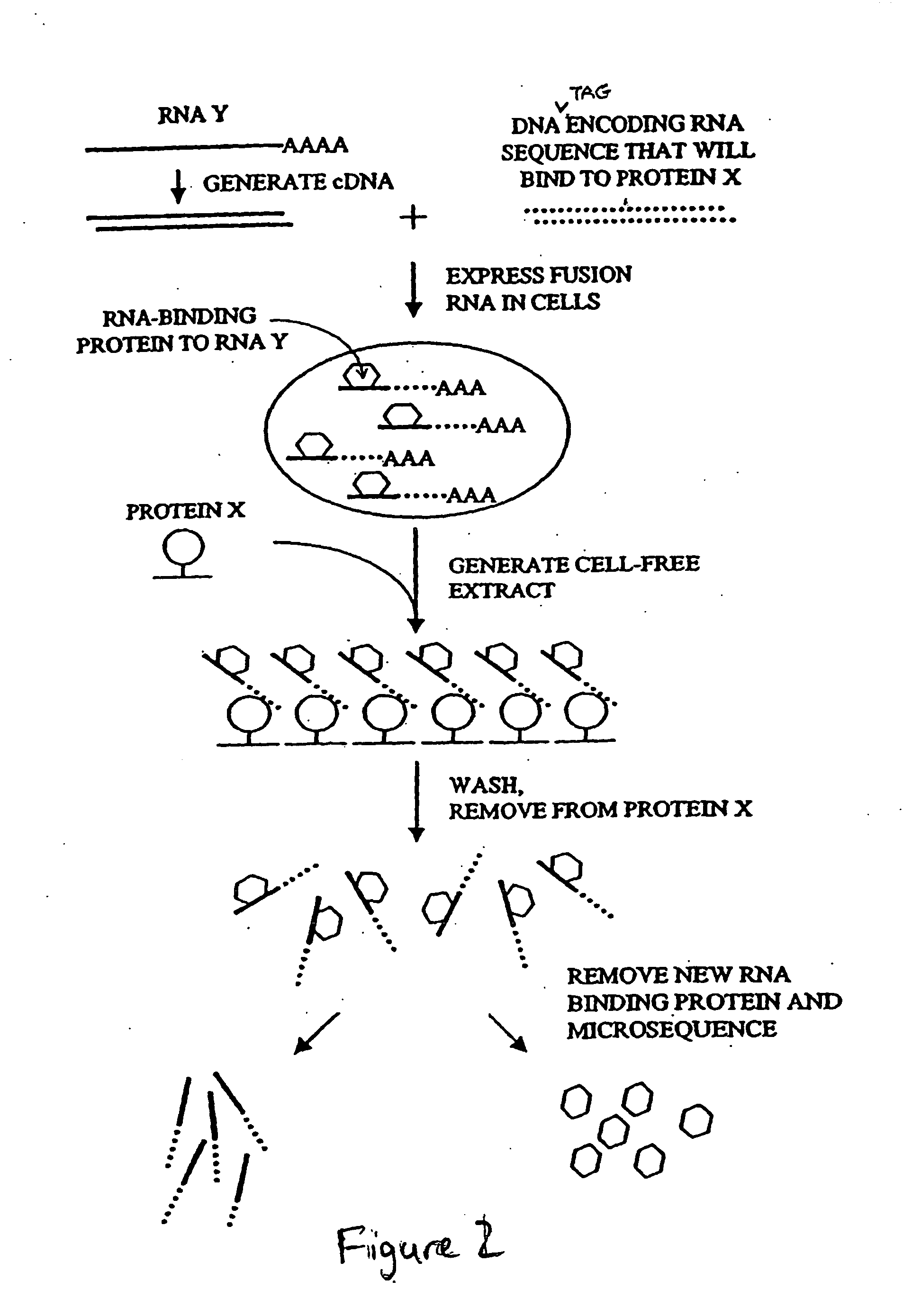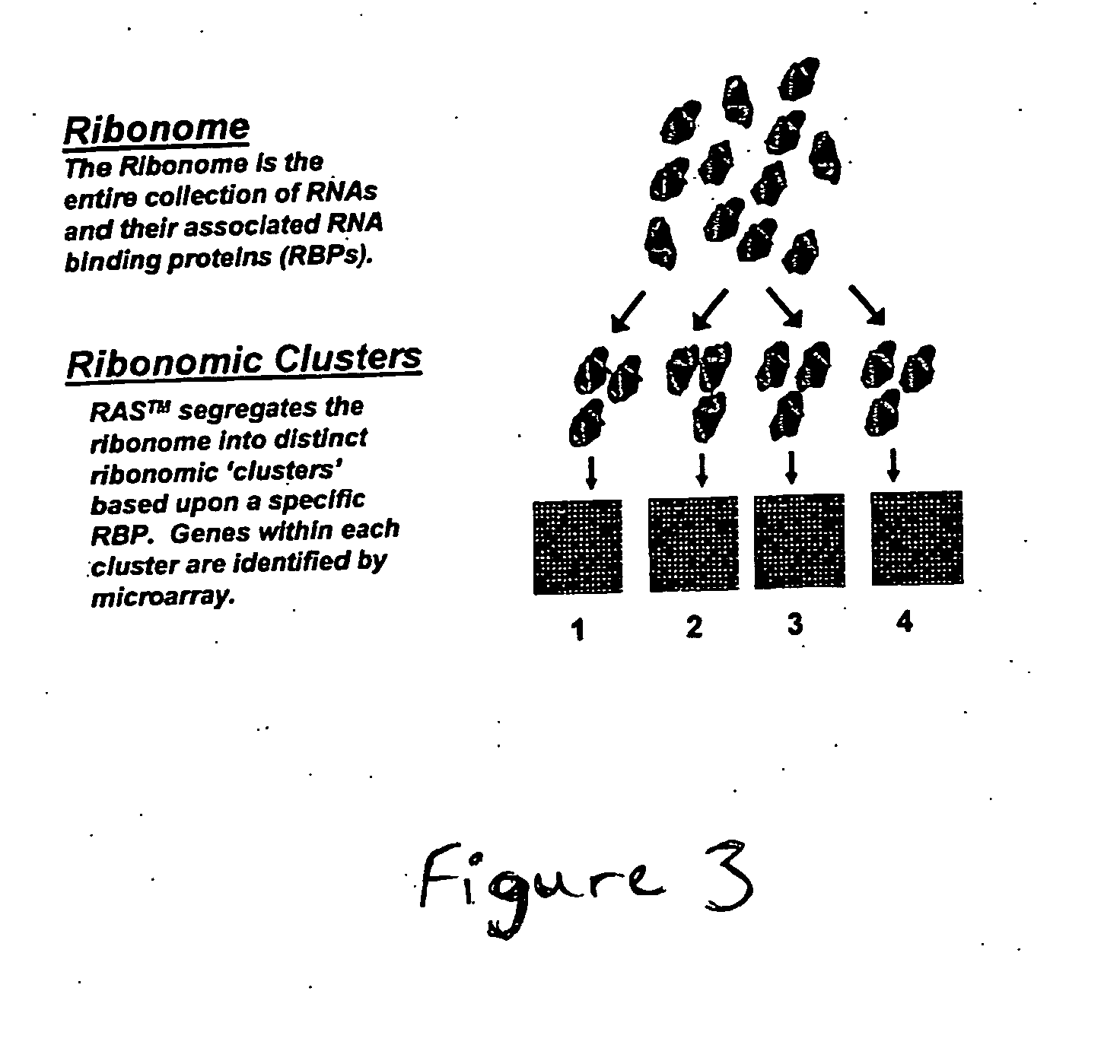Methods for identifying therapeutic targets involved in glucose and lipid metabolism
a technology of lipid metabolism and therapeutic targets, applied in the direction of drugs, instruments, immunological disorders, etc., can solve the problems of not fully characterized the number of regulatory aspects of pancreatic beta cells producing insulin, and the inability of pancreatic beta cells to produce insulin
- Summary
- Abstract
- Description
- Claims
- Application Information
AI Technical Summary
Benefits of technology
Problems solved by technology
Method used
Image
Examples
example 1
Target Discovery Using Ribonomic Profiles
[0150] The general steps required for target discovery using the methods of the invention are summarized in FIG. 5. Briefly, expression profiles for RNA binding proteins are generated to identify RNA binding proteins that have altered expression in different cell types, in a disease phenotype, or in response to certain stimuli, for example. Candidate RNA binding proteins may then be cloned and their cDNAs inserted into various bacterial and mammalian expression vectors for production of recombinant RNA binding proteins and overexpression of RNA binding proteins, respectively. Recombinant or purified RNA binding proteins are then used to generate monoclonal or polyclonal antibodies for use in RAS™ analysis performed on extracts from cells or tissues. Intact mRNP complexes associated with the differentially expressed RNA binding protein are then immunoprecipitated, for example, using antibodies to the RNA binding protein. Once the mRNP complex...
example 2
Identification and Immunoprecipitation of Preproinsulin RNA Binding Proteins Using RIBOTRAP™
[0175] An alternative method for purifying and identifying RNA binding proteins is the RIBOTRAP™ assay (Ribonomics, Durham, N.C.). Two approaches for RIBOTRAP™ are described below. The first approach is an in vitro affinity-based assay using immobilized biotinylated oligonucleotides with sequences corresponding to RNA binding protein binding elements (Method 1). The second approach uses an affinity-tag placed on a full-length mRNA of interest or fragment of the mRNA of interest, which is expressed in a cell culture model and isolated using immobilized antibodies against the tag (Method 2).
[0176] To summarize Method 1, a cDNA representing a nucleic acid of interest or a portion of a nucleic acid that encodes an RNA binding protein binding site (e.g., a 5′ or 3′ UTR) is cloned using standard techniques into an expression vector possessing an appropriate mammalian cell promoter (e.g., a CMV, SV...
example 3
Analysis of RNA Binding Protein Expression and Associated mRNAs in Human Adipocytes and Preadipocytes
[0188] Adipocytes have long been considered a primary location for glucose disposal and energy storage in the form of triglycerides (fat). Adipocytes also comprise critical endocrine tissue that not only responds to insulin through glucose uptake and lipogenesis, but also synthesizes and secretes a variety of signaling molecules involved in systemic energy homeostasis. An analysis of RNA binding proteins and their associated mRNAs and mRNP complex-associated proteins and their role in gene expression in adipocytes provides a better understanding of adipocyte function and can identify targets for therapeutics that treat conditions associated with aberrant glucose or lipid metabolism. A flow chart for an exemplary adipocyte analysis is provided in FIG. 9.
[0189] RNA binding proteins that are enriched in mature adipocytes vs. preadipocytes in lean individuals (BMI<24) were identified a...
PUM
| Property | Measurement | Unit |
|---|---|---|
| Magnetic field | aaaaa | aaaaa |
| Electrical resistance | aaaaa | aaaaa |
| Therapeutic | aaaaa | aaaaa |
Abstract
Description
Claims
Application Information
 Login to View More
Login to View More - R&D
- Intellectual Property
- Life Sciences
- Materials
- Tech Scout
- Unparalleled Data Quality
- Higher Quality Content
- 60% Fewer Hallucinations
Browse by: Latest US Patents, China's latest patents, Technical Efficacy Thesaurus, Application Domain, Technology Topic, Popular Technical Reports.
© 2025 PatSnap. All rights reserved.Legal|Privacy policy|Modern Slavery Act Transparency Statement|Sitemap|About US| Contact US: help@patsnap.com



